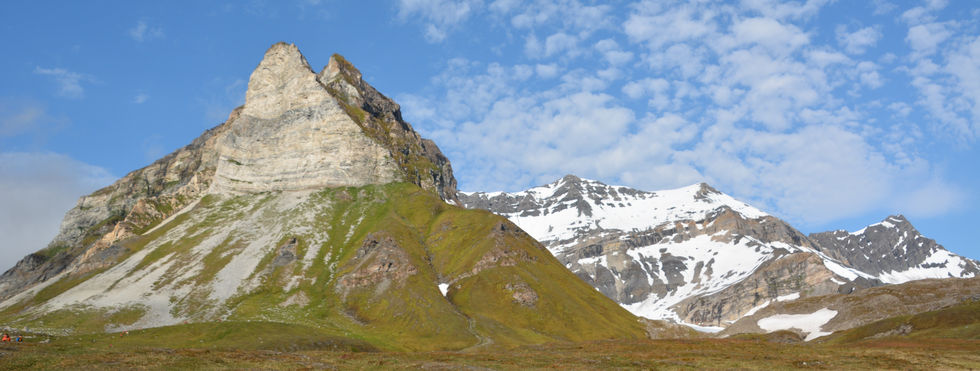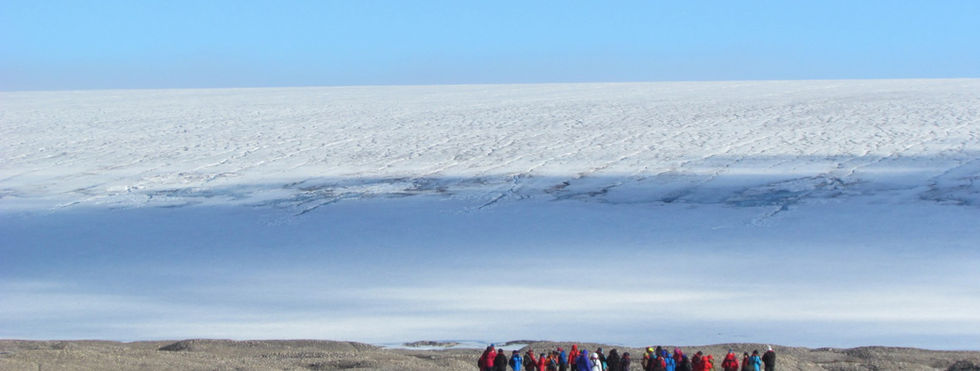Quick Facts about Svalbard
Svalbard is a Norwegian archipelago in the Arctic Ocean, which is situated about midway between continental Norway and the North Pole. In 1925, Svalbard became part of the Kingdom of Norway. The islands were first used as whaling base in the 17th and 18th centuries. The Svalbard Act of 1925 made Svalbard a free economic zone and a demilitarized zone.
The largest island of Svalbard is Spitsbergen, followed by Nordaustlandet and Edgeøya. Longyearbyen is Svalbard's main settlement with about 2,400 people in 2019.
The average summer temperature in Svalbard is around 4-6 °C (39 to 43 °F). The January average is −16 to −12 °C (3 to 10 °F). Due to the West Spitsbergen Current, the west coast of Spitsbergen is navigable most of the year.
Polar bears are the iconic symbol of Svalbard. There are around 3,000 polar bears in the Svalbard archipelago and Barents Sea, which exceeds the human population. Other primary species you may see include the Arctic fox, the Svalbard reindeer and southern voles. Svalbard is also home for eighty specifies of bird like the Arctic tern, little auk, northern fulmar and black-legged kittiwake etc.
Top 5 Reasons to visit Svalbard
-
Svalbard is the perfect place to admire polar bears in their nature settings
-
Get your cameras ready for walruses, seals, whales, arctic foxes, reindeer and millions of nesting birds
-
Enjoy the stunning view of fjords and glaciers & hike on tundra
-
Discover the rich history of Arctic exploration by visiting Ny-Ålesund and other sites
-
Daily directly flights from Oslo make Svalbard the most accessible Arctic destination
The Seasons of Svalbard

Polar Summer
Mid May to Sep
-
The temperature rises above zero between June and August
-
24 hours of daylight until late Aug
-
Vast numbers of migration birds come to Svalbard for nesting
-
The best season for walruses, seals and whales due to plentiful supply of food
-
Your best chance of seeing polar bears from expedition ships!

Winter
Oct to Feb
-
The temperature starts to drop below zero
-
Polar nights from mid Nov to late Jan
-
The only permanently settled place on earth to experience Northern Lights day or night
-
Feb is the best time to explore the frozen wilderness of Svalbard’s interior
-
Polar bears make the dense drift ice and the ice of the frozen fjords and bays their home during winter

Spring
Mar to Mid May
-
It is still fully winter with beautiful ice and snow-covered landscape weatherwise
-
Pastel winter until mid April when day light increases gradually
-
Great outdoor opportunities by ski, dog sled or snowmobile
-
Midnight sun starts from mid April
-
April is the peak breeding time for polar bears
-
In May, snow starts to melt and first migratory birds arrive
Landing Sites in Svalbard
There are many possible landing sites in Svalbard. The actual expedition plan depends on weather and ice conditions. The water north of Spitsbergen and Nordaustlandet might be blocked by sea ice in early season, which could prevent a circumnavigation of Spitsbergen. But regardless, you will still have ample opportunities to view stunning fjords, glaciers and encounter polar bears among other wildlife anywhere in Svalbard.











































































